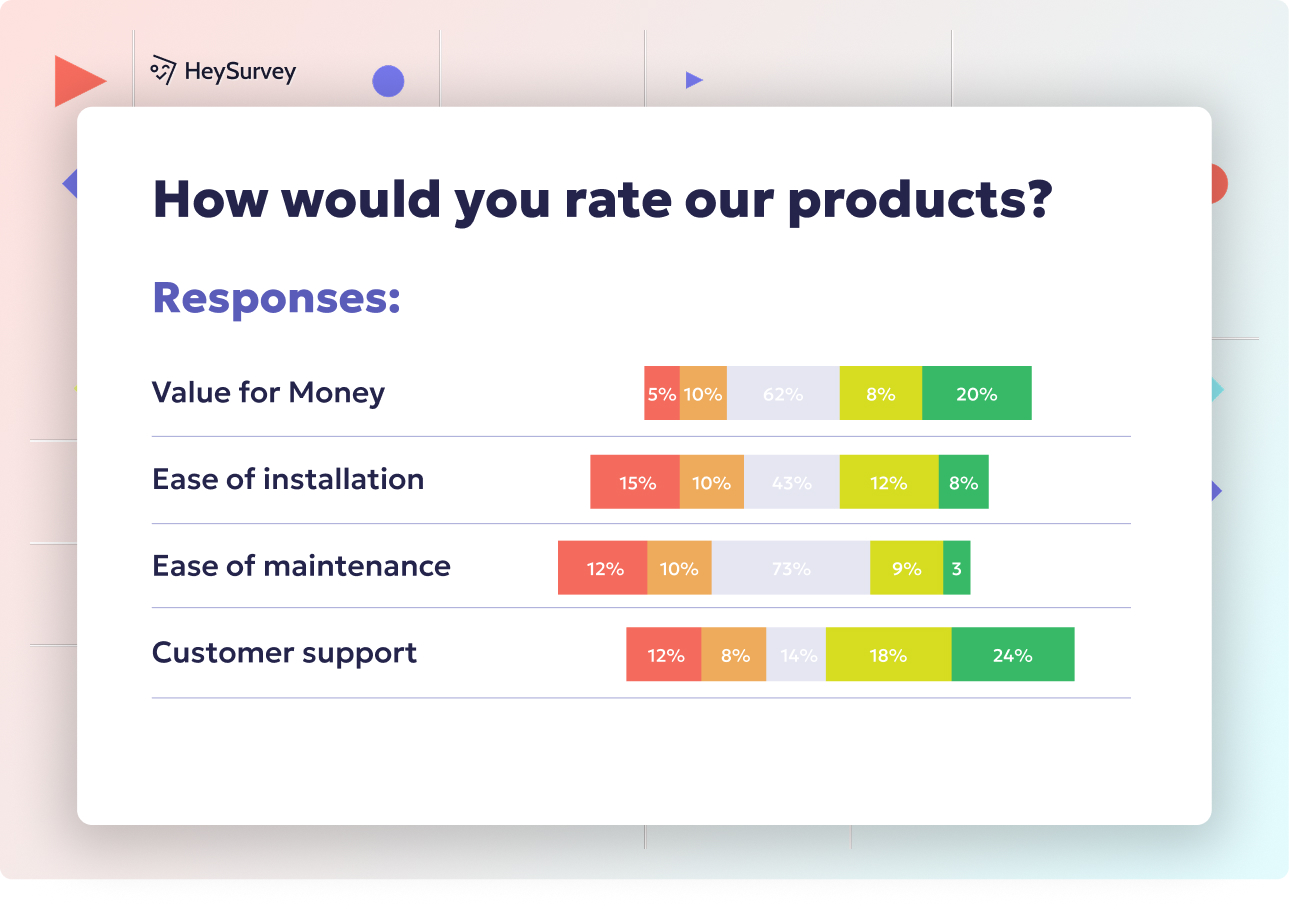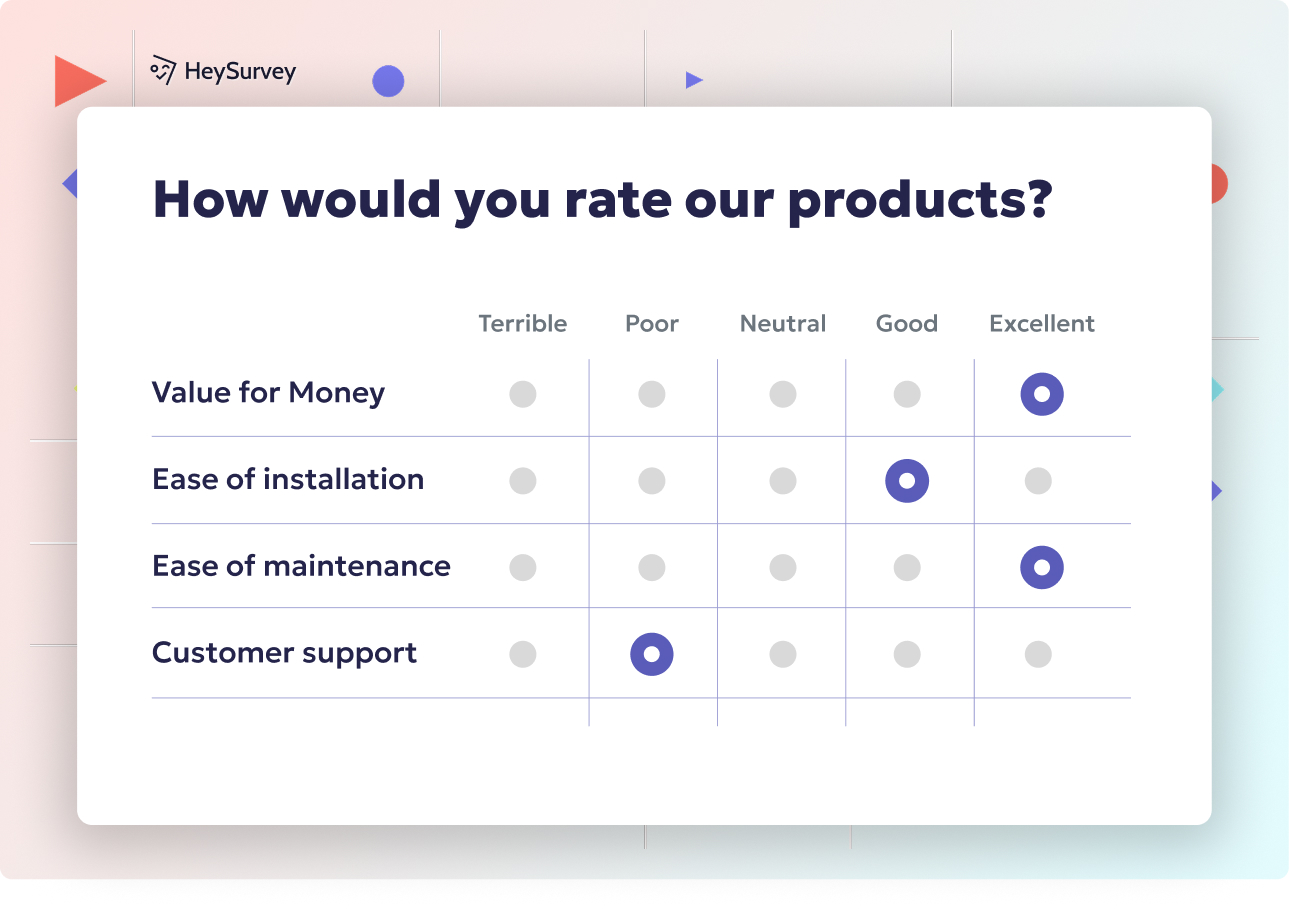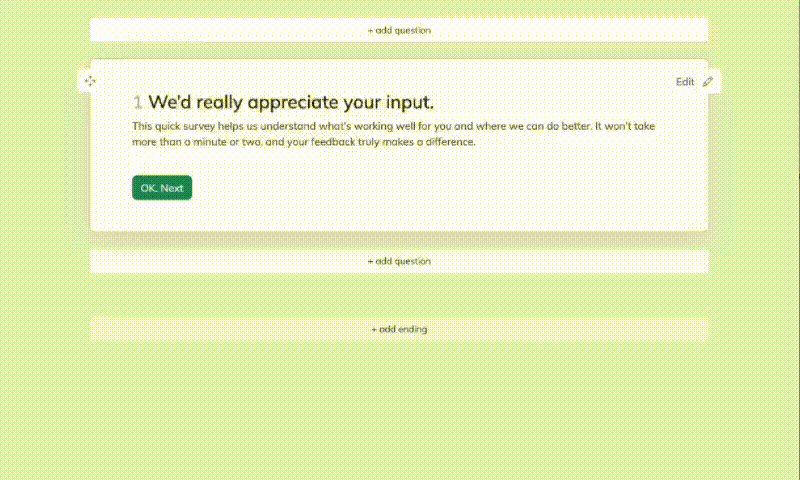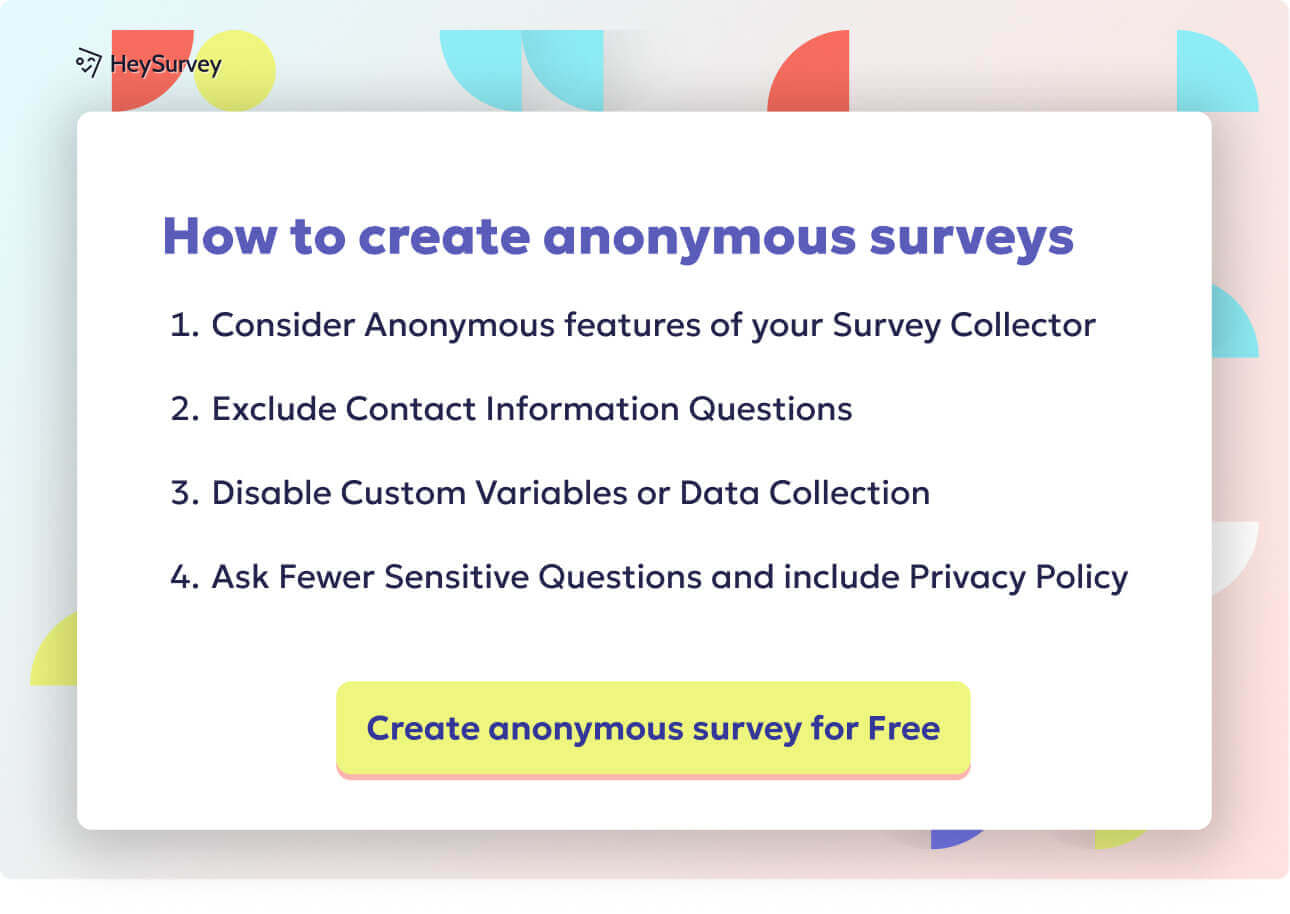31 Teacher Satisfaction Survey Questions to Boost Engagement
Discover 30+ teacher satisfaction survey questions covering job satisfaction, PD, leadership, resources, wellbeing, recognition, and retention.
In the ever-evolving world of education, one thing stays the same: teachers are the heartbeat of every school. Teacher satisfaction surveys aren’t just paperwork—they’re essential tools for measuring the pulse of faculty morale and engagement. Regular feedback, through both quick pulse checks and deeper annual dives, helps uncover hidden frustrations, improve teacher retention, and, best of all, lead to better outcomes for students.
Job Satisfaction Surveys
Why & When to Use This Survey
When teachers are happy in their work, schools shine brighter. Teacher job satisfaction surveys let schools tap into the daily realities and joys of teaching. They also shed light on role clarity, help spot potential shifts in motivation, and keep a finger on the pulse of how well classroom expectations align with career goals.
You’ll want to roll out this survey during key milestones. Perfect moments include mid-year reviews, before contract renewals, or after rolling out significant policy changes. Each of those moments can bring surprises, so measuring staff engagement helps prevent issues from simmering below the surface.
Want great data on school HR metrics? This is the way to get it! With candid feedback, leadership can nip issues in the bud—before they lead to costly turnover or plummeting school spirit. Ultimately, a quick check-in can make a world of difference for both new hires and seasoned pros.
Sample Questions
How satisfied are you with your current teaching assignment and grade level?
To what extent does your workload feel manageable?
Do you feel your talents are fully utilized in the classroom?
How likely are you to recommend this school as a workplace to fellow educators?
What one change would most improve your daily job satisfaction?
A 2024 Pew Research Center survey found that only 15% of public K-12 teachers are highly satisfied with their salary, while 51% are dissatisfied. (pewresearch.org)

Creating a teacher satisfaction survey with HeySurvey is a breeze—even if you’re new to the platform. Here’s a quick 3-step guide to get your survey live and ready to gather insights:
Step 1: Create a New Survey
- Open HeySurvey and click Create Survey.
- Choose either to use a template (perfect for teacher satisfaction) or start with a blank survey for full customization.
- Give your survey an internal name to keep things organized.
Step 2: Add Questions
- Hit the Add Question button at the top or between existing questions.
- Select question types like Choice (single or multiple answers), Scale (Likert ratings), or Text (open-ended responses).
- Enter your teacher satisfaction questions—don’t forget to use a mix of scales and open-ended ones for richer feedback!
- Mark critical questions as required so respondents can’t skip them.
Step 3: Publish Your Survey
- Click the Preview button to see how your survey looks for teachers.
- Once happy, hit Publish to generate a shareable link for distribution.
- Remember, you’ll need a HeySurvey account to publish and access results.
Bonus Steps to Make Your Survey Shine
- Apply Branding: Upload your school logo in the Designer Sidebar so your survey feels official and familiar to respondents.
- Define Settings: Set start/end dates, response limits, and a custom thank-you redirect URL in the Settings Panel to control when and how your survey runs.
- Skip & Branching: Use branching logic to skip irrelevant questions or direct teachers to sections based on their answers, making the experience smoother and more personalized.
Start by opening a teacher satisfaction survey template below and watch your feedback flow in!
Professional Development Satisfaction Surveys
Why & When to Use This Survey
Every teacher knows professional growth is a lifelong journey—sometimes it’s inspiring, sometimes just exhausting. PD feedback surveys make sure all that effort is actually helping teachers spark new ideas and refine their craft. They focus on the true impact of workshops, coaching, and certification programs, ensuring sessions are relevant and practical.
It’s best to send out these surveys right after any formal teacher training survey event. Immediate feedback means fresh, honest answers. Don’t forget to check in again at the end of each semester, so you can spot patterns and fine-tune offerings for the next term.
If teachers don’t feel supported, even the most dazzling new methods fall flat. By regularly assessing instructional coaching satisfaction, schools can recognize what’s working and where a bit of tweaking is needed. The payoff? More engaged teachers and livelier classrooms.
Sample Questions
How relevant was the recent professional development to your instructional needs?
Rate the balance between theory and practical classroom strategies provided.
Did the session offer actionable resources you can use right away?
How satisfied are you with opportunities for ongoing mentorship?
What additional PD topics would you like offered next term?
Teachers who participate in more professional development activities report higher job satisfaction. (mdpi.com)
School Climate & Leadership Surveys
Why & When to Use This Survey
A school’s vibe often starts at the top. School climate surveys help measure the invisible forces that shape the halls—from trust in administration to everyday collegial relationships. When morale is high and relationships are strong, collaboration thrives and challenges become easier to tackle.
Timing matters! These surveys fit best at the end of each academic year or right after a big change in leadership. Surveys work wonders for capturing opinions about principal leadership feedback and the evolving sense of staff culture.
Healthy faculty cultures only grow when teachers feel safe sharing their real thoughts. Strong data helps leadership celebrate bright spots and spot any shadows. With these insights, schools can build a stronger, friendlier, and more responsive teaching environment for all.
Sample Questions
I feel comfortable voicing concerns to school leadership.
School policies are applied consistently and fairly.
Collaboration among teachers is encouraged and supported.
Describe one thing administration could do to improve staff morale.
Rate the effectiveness of staff meetings in addressing real classroom issues.
Resources & Support Satisfaction Surveys
Why & When to Use This Survey
Every teacher has a wish list for their classroom, and it usually starts with teacher resources survey tools. These surveys uncover just how well instructional materials, classroom tech, and paraprofessional support are meeting the real demands of modern teaching.
Deploy these surveys at the start and midpoint of the academic year to catch supply shortages early or note where technical snafus slow great lessons. Regular classroom support feedback lets administrators spot trends and start solving problems before frustrations mount.
If left unchecked, lack of resources can hurt not just instructional materials satisfaction—it can shake a teacher’s confidence. Honest answers here help school leaders target investments where they’re needed most, making sure every classroom is truly set up for success.
Sample Questions
How adequate are the supplies provided for your subject area?
Rate the reliability of classroom technology you use daily.
Do you receive timely IT or maintenance support when issues arise?
How satisfied are you with access to special education aides or paraprofessionals?
What additional resources would most enhance your teaching effectiveness?
A 2021 survey by the National Association of Independent Schools found that while 80% of teachers considered salary parity with local independent schools extremely important, only 21% were extremely satisfied with their compensation. (nais.org)
Work-Life Balance & Wellbeing Surveys
Why & When to Use This Survey
Let’s be real—teaching is rewarding and utterly exhausting. Teacher burnout surveys are like early-warning systems for stress, workload imbalances, and general wellbeing. By shining a light on these hidden struggles, schools can step in before teachers lose their spark—or call it quits.
Quarterly “pulse” surveys keep a regular check, especially right before high-stress periods like standardized tests. Often, the simple act of asking about educator wellbeing shows teachers their struggles are seen and valued.
Being proactive about work-life balance in teaching helps nip burnout in the bud. With a steady rhythm of feedback, schools can strengthen their wellness programs, fine-tune schedules, and create a more sustainable environment for everyone.
Sample Questions
How often do you feel overwhelmed by your workload?
I can disconnect from work during evenings and weekends.
Rate the effectiveness of current wellness programs offered by the school.
How supported do you feel when needing mental health days?
What factors most contribute to your stress levels at work?
Recognition & Reward Satisfaction Surveys
Why & When to Use This Survey
Giving a standing ovation for faculty achievements shouldn’t be a once-a-year thing. Teacher recognition surveys are the best way to check if staff feel valued, whether through salary, bonuses, or that simple but rare hand-written thank you note from the principal.
It’s a smart move to survey staff after annual pay reviews or end-of-year awards. Honest faculty rewards feedback helps schools see if praise, promotions, or financial perks are actually meaningful—or if they’re missing the mark.
Nothing props up morale like feeling seen and appreciated. By zeroing in on pay satisfaction, schools can decide what’s working, what needs a fresh coat of paint, and what creative recognition programs might actually stick.
Sample Questions
I receive adequate recognition for my achievements.
How fair is the current performance evaluation process?
Rate your satisfaction with opportunities for promotion or leadership roles.
Do financial incentives align with the effort required for extra duties?
Describe a recognition program you’d like the school to adopt.
Exit & Retention Risk Surveys
Why & When to Use This Survey
No leader likes teacher goodbyes—especially if they’re preventable. Teacher exit surveys help schools uncover the honest reasons staff have one foot out the door, and what could convince them to stay just a little longer.
Run these surveys during confidential check-ins or as part of your off-boarding routine. This makes retention risk assessment both a safety net for loyal faculty and a reality check for growing turnover.
Getting real about faculty turnover ensures you address root problems, not just symptoms. With clear data, schools can spot trends, shore up weak spots, and create an environment where more teachers want to stick around—year after year.
Sample Questions
What were the top three reasons influencing your decision to stay/leave?
Rate your overall experience working at this school.
Which resources or changes might have influenced you to remain?
How likely are you to return if circumstances change?
Would you recommend this school to potential teaching candidates?
Best Practices: Dos and Don’ts for Crafting Teacher Satisfaction Surveys
Crafting a great teacher satisfaction survey is its own kind of art. Survey best practices can make the difference between insightful feedback and a giant shrug from staff. When done right, surveys lead to high response rates and—best of all—actionable teacher feedback.
Dos: - Keep surveys concise; nobody likes 100 questions at the end of a long week. - Use a healthy mix of Likert-scale and open-ended questions for depth and clarity. - Assure anonymity, so teachers know they can speak honestly without fear. - Segment results by department to spot trends specific to certain grades or subjects.
Don’ts: - Avoid leading questions that nudge toward a “right” answer. - Don’t over-survey! Frequent interruptions will just train teachers to tune out. - Skip jargon or education-speak; simple language ensures everyone is on board. - Never ignore what comes back—closing the feedback loop shows you’re listening.
When you keep these dos and don’ts in mind, staff feel respected and heard. Having robust feedback loops shows you’re truly invested in making positive, lasting changes in your school community.
Encourage your school leadership to start today—listen deeply, act thoughtfully, and watch satisfaction rise in every classroom. Your staff and students will thank you for it!
Related Teacher Survey Surveys

32 Teacher Perception Survey Questions for School Improvement
Explore 30 insightful teacher perception survey questions, covering school climate, PD needs, lea...

29 Survey Questions for Teachers to Boost Success
Explore 25+ insightful survey questions for teachers to boost engagement, professional growth, an...

32 Survey Teacher Evaluation Questions for Effective Feedback
Discover 25+ survey teacher evaluation questions with sample items and expert tips for effective ...

